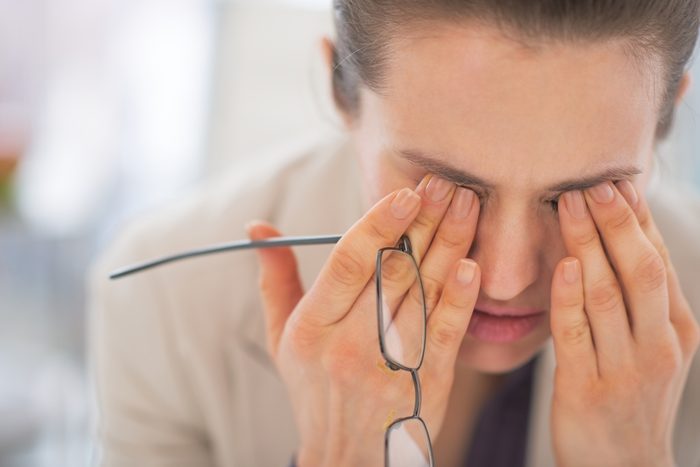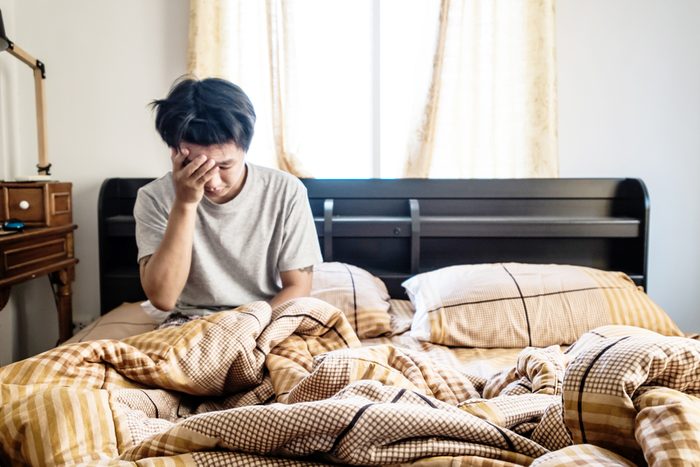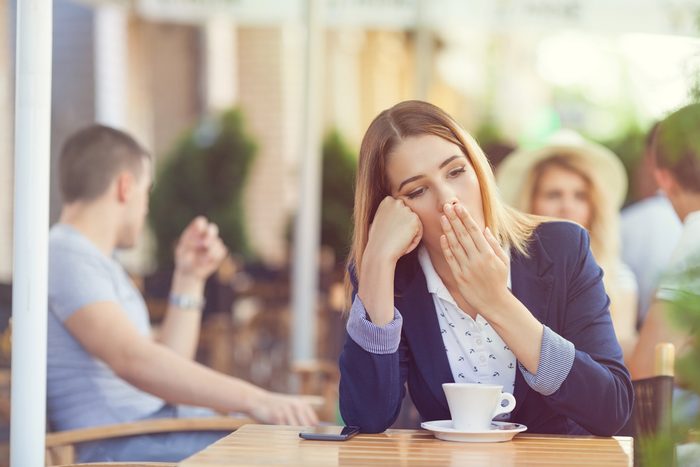
3 Common Sleep Disorders
People are just not getting enough sleep, says Dr. Helen Driver, a somnologist and assistant professor at Queen’s University in Kingston, ON. “As a society, we’re chronically sleep-deprived.” Just look at our dependence on alarm clocks (if we slept enough, we wouldn’t need them) and caffeine (ditto).
Dr. Driver says we’re increasingly relying on data from health-tracking devices to tell us whether we’ve had enough rest when all we need to do is check in with how we feel. “If you wake up with a headache and you’re grumpy and dragging yourself through the day, the first thing you need to ask is ‘Did I get enough sleep last night?'”
When it comes to sleep, quantity and quality are equally important – if either one suffers, it can affect everything from blood sugar to brain function. “We now know that sleep plays a role in whole brain and body well-being,” says Dr. Driver. And, according to the 2016 Canadian Sleep Review, we all crave more of it – the national survey found 87 percent of us would pay up to $500 for a week’s worth of restful sleep.
Fortunately, no matter what it is that’s keeping you up at night, there’s a solution. Here are three common sleep saboteurs and what you can do to put them to rest.

Sleep Apnea
You start out peppy enough, but you’re nodding off over your keyboard by 11 a.m., are on your third latte by 3 p.m. and need to crank the tunes to stay awake on the drive home. “We all have peaks and troughs of alertness during the day,” says Dr. Driver. “We don’t stay at one level.” But, she says, if you regularly experience micro-sleeps, you may be one of the 5.4 million Canadians who has sleep apnea.
Micro-sleeps, a red flag for sleep apnea, occur when part of your brain shuts down temporarily; you might find yourself staring blankly at your computer screen or struggling to keep your eyes open before jerking yourself awake. Micro-sleeps can last anywhere from a fraction of a second to 10 seconds and are basically your brain forcing you to take a quick nap, whether you like it or not.
The most common cause of persistent daytime drowsiness is sleep fragmentation due to sleep apnea, which is when your breathing repeatedly stops and starts. “Apnea means ‘without breath,'” says Dr. Driver. “And while snoring can disrupt sleep, at least if you’re snoring, you’re still breathing.” People with sleep apnea are often snorers who also experience periods during the night where their breathing stops altogether. They often don’t realize they have a problem, even though they may have actually woken up 100 times or more.
Get More ZZZs…
Sleep apnea is a serious medical condition (it can lead to high blood pressure, heart problems and Type 2 diabetes), so it’s important to see a doctor if you suspect you have it. For mild cases, lifestyle changes (like quitting smoking or losing weight) may be all it takes to solve the problem, but some people require a sleep mask or other devices that increase air pressure to keep their upper airways open. If none of these treatments works, you may need surgery to reposition your jaw or to remove tissue from the top of your throat to enlarge the airway.

Insomnia
You know you have it if it takes you 30 minutes (or longer) to fall asleep and you’re restless in the wee hours for three or more nights a week for over a month. “Insomnia as a medical problem is ancient, but we’re making it worse,” says Dr. Charles Samuels, medical director for the Centre for Sleep and Human Performance in Calgary and president-elect of the Canadian Sleep Society. “Sleep is one of the most fragile systems in the body and can be disturbed very quickly.” There are a billion reasons why insomnia can happen (caffeine, nicotine, alcohol, poor sleep habits), but a big one is stress that leads to a busy mind.”You lie down and your brain starts going, or you wake up, start thinking and can’t stop,” he says.
Get More ZZZs…
Prescription medications can be a short-term fix, but many people resort to over-the-counter drugs because they think they’re better than taking sleeping pills, says Dr. Samuels. They’re not. “The sleep aids in pharmacies are antihistamines, and they’re not a good approach to managing insomnia,” he says. Antihistamines block the awake-promoting neurotransmitter histamine, yet Dr. Samuels says the way to put people to sleep is not by blocking wakefulness but by enhancing the sleep-promoting system in the brain.
The healthiest – and most effective – way to treat insomnia is by using mindfulness and cognitive behavioural therapy for insomnia (CBTi), and now there are online programs, like SHUTi, that can help you do it on your own. “For the general population struggling with insomnia, these programs really do the job,” says Dr. Samuels. “The underlying cause of insomnia is learned sleeplessness, and the solution is to change the behaviours that promote it.”
For example, most people with insomnia go to bed early because they’re so tired, which is exactly the wrong thing to do. Spend too much time in bed – even if you’re wide awake – and your body believes that you’ve overslept.
“We put insomniacs to bed at midnight and they freak out, but that’s actually what works.” The idea is that by accumulating sleep debt, you drive sleep pressure. Instead of going to bed at 9 p.m., you may need to stay up until midnight and get up at six. Dr. Samuels says a moderate degree of sleep deprivation improves the quality and depth of sleep, and you can slowly increase the hours over time.

Restless Leg Syndrome
Sometimes all your best efforts at good sleep hygiene (dark room, solid sleep schedule and soothing white noise) won’t see you through the night, especially if you have a chronic health condition that only intensifies after lights out.
One of these is related to restless leg syndrome, simply called PLMS (periodic leg movements during sleep), which is a condition that may be caused by an imbalance of dopamine in the brain, which sends messages to control muscle movement.
“Periodic leg movements can be as small as a dorsal flexion of the toe – where the toe comes up toward knee – but we also see cases where people make a bicycle movement with their whole leg,” says Dr. Driver. Needless to say, it’s hard to sleep when that’s happening.
Meanwhile, chronic pain is something else that might be keeping you up. “Pain is often perceived as being worse at night,” says Dr. Maureen Ceresney, co-director of the UBC Sleep Disorders Program. “That’s probably because there’s nothing else to distract people from it, or the pain is worse when you’re immobile or in certain positions.”
The problem with pain is that sleep quality affects our ability to tolerate it, which means it’s especially important for chronic pain sufferers to sleep well. “If you sleep better, your brain perceives the same amount of painful stimulus as less painful,” says Dr. Ceresney.
Get More ZZZs…
Restless leg syndrome is more common in women than men and tends to get worse as you age. In some cases, it may be caused by an iron deficiency, so talk to your doctor about a supplement. Otherwise, you may be prescribed muscle relaxants or medication to increase dopamine levels in the brain.
When it comes to coping with chronic pain at night, Dr. Ceresney says it helps to adopt the same strategies you’d use to treat insomnia. “Because the relationship between sleep and pain is bidirectional, treating insomnia can also help with pain.” One of the most important things is having a consistent schedule, especially when it comes to wake-up time. “It should be the same every day because it helps synchronize your body clock and ensures that you’ll have a more predictable timing of sleep onset at night.”
It’s also important to tackle the pain problem itself. This may mean talking to your doctor about the best management strategies for you, whether pharmaceutical or a more integrated approach that might include medication, acupuncture or mind-body exercises that have been shown to relieve symptoms of chronic pain, such as tai chi.
